Are you tired of battling stubborn residue clinging to your beloved muffin pan after every baking adventure? Say goodbye to the days of endless scrubbing and frustration!
Cleaning a muffin pan can be a breeze with the right techniques at your fingertips. Imagine effortlessly restoring your pan to its pristine state, ready to embark on another delicious baking escapade.
Whether it’s the remnants of blueberry muffins or the remnants of savory cornbread, mastering the art of muffin pan cleaning will leave you feeling victorious and your kitchen sparkling.
So, roll up your sleeves and prepare to discover the secrets to achieving muffin pan perfection with ease and efficiency!
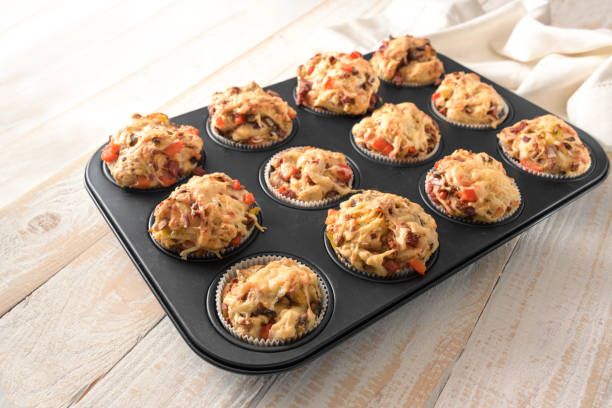
How To Clean Muffin Pan
Cleaning a muffin pan may seem like a daunting task, especially when faced with baked-on batter or stubborn grease. However, with the right approach, it can be a relatively quick and easy process. Here are four steps to effectively clean a muffin pan:
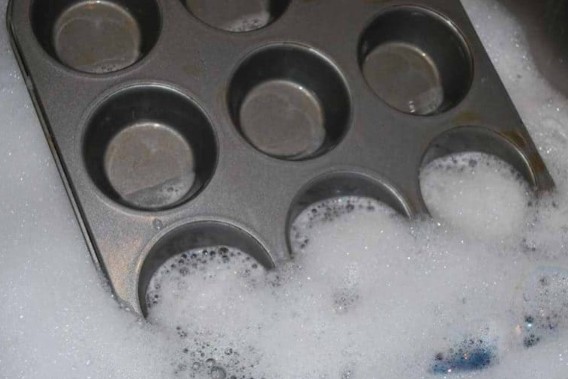
Make A Baking Soda Solution
To make a baking soda solution for cleaning, simply mix baking soda with water until you achieve a paste-like consistency. Baking soda, or sodium bicarbonate, is renowned for its gentle abrasive properties and ability to break down grease and grime.
This solution is versatile and can be used to clean various surfaces, from kitchen countertops to bathroom tiles. Its non-toxic nature also makes it safe for use around food preparation areas.
Whether tackling tough stains on pots and pans or freshening up upholstery, a baking soda solution is a go-to for environmentally friendly and effective cleaning.
Bake The Muffin Pan In The Oven
Baking the muffin pan in the oven is an effective method for removing stubborn residue and grease buildup. Start by preheating your oven to a moderate temperature, typically around 350°F (175°C).
Once preheated, place the muffin pan upside down on the middle rack of the oven. Allow it to bake for about 10 to 15 minutes. The heat will help to loosen the baked-on residue, making it easier to remove.
After baking, carefully remove the muffin pan from the oven using oven mitts or pot holders, as it will be hot. Let it cool for a few minutes before proceeding to clean it using a gentle scrubbing brush or sponge and dish soap.
This method is particularly effective for removing stubborn stains and is suitable for most types of muffin pans, including non-stick varieties.
Pour Away The Solution And Clean The Remaining Grease
After allowing the baking soda solution to work its magic, pour it away, discarding any loosened grease and grime down the drain. Then, using a sponge or scrub brush, thoroughly clean the muffin pan with warm, soapy water.
Pay close attention to any remaining grease or residue, ensuring all surfaces are scrubbed clean. For particularly stubborn spots, you may need to apply a bit of extra elbow grease or use a small amount of baking soda as a gentle abrasive.
Rinse the muffin pan thoroughly under running water to remove any soap residue, and then dry it with a clean towel or cloth. This step ensures that your muffin pan is not only clean but also free of any leftover cleaning solution, leaving it ready for your next baking adventure.
Soak The Pan
Soaking the muffin pan is a crucial step in the cleaning process, especially for removing baked-on residue and grease. Start by filling the sink or a large basin with warm water and adding a few drops of dish soap.
Submerge the muffin pan in the soapy water and let it soak for 10 to 15 minutes. This allows the soap to penetrate and loosen the tough stains, making them easier to remove during the scrubbing process.
For extra stubborn spots, you can add a tablespoon of baking soda to the soaking water, which helps to further break down grease and grime. Once the soaking time is up, proceed with scrubbing the pan to remove any remaining residue, rinse it thoroughly, and dry it before storing or using it again.
Different Ways To Use A Muffin Pan
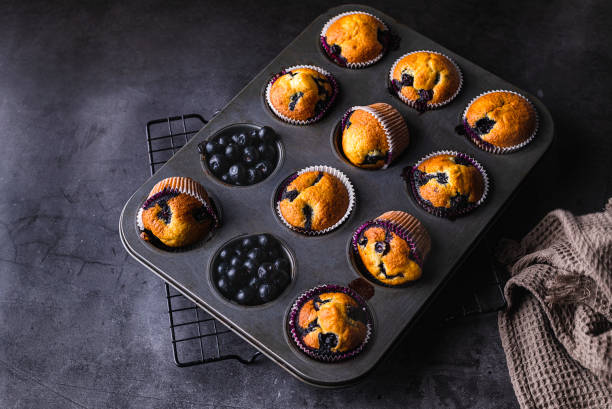
A muffin pan is a versatile kitchen tool that can be used for much more than just baking muffins. Here are several creative ways to utilize a muffin pan:
Mini Quiches or Frittatas
Use the individual cups of the muffin pan to make mini quiches or frittatas. Simply whisk together eggs, cheese, vegetables, and any other desired ingredients, then pour the mixture into the greased muffin cups and bake until set. These mini quiches make perfect grab-and-go breakfasts or snacks.
Frozen Treats
Make homemade frozen treats like mini ice cream cups or frozen yogurt bites. Line the muffin cups with paper liners, fill them with softened ice cream or yogurt, and top with fruits, nuts, or chocolate chips. Freeze until solid, then enjoy your bite-sized frozen treats.
Bite-Sized Desserts
Create bite-sized desserts such as mini cheesecakes, brownie bites, or individual lava cakes. Simply adjust your favorite dessert recipes to fit the size of the muffin cups and bake accordingly. These mini desserts are great for parties or portion control.
Egg Breakfast Cups
Bake eggs in muffin cups for easy and customizable breakfast cups. Crack an egg into each greased muffin cup, add toppings like cheese, vegetables, or cooked bacon or sausage, and bake until the eggs are set. These egg breakfast cups are perfect for meal prep and can be enjoyed hot or cold.
Mini Meatloaves or Meatballs
Use the muffin pan to portion and bake mini meatloaves or meatballs. Simply mix together your favorite meatloaf or meatball recipe, divide the mixture among the greased muffin cups, and bake until cooked through. These mini portions are great for kids or for serving at parties with toothpicks for easy eating.
Freezing Ingredients
Use the muffin pan to freeze ingredients like herbs, broth, or homemade baby food in convenient portions. Simply pour the ingredients into the greased muffin cups, freeze until solid, then transfer the frozen portions to a freezer bag for long-term storage.
How To Use And Maintain A Muffin Pan
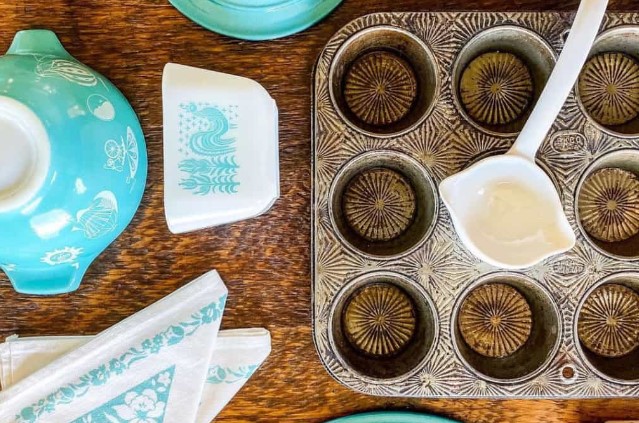
Using and maintaining a muffin pan is relatively straightforward, but following a few key tips can help ensure optimal performance and longevity:
Grease The Muffin Pan Before Use
Before using a muffin pan, it’s essential to grease each cup to prevent sticking and ensure easy removal of baked goods. Greasing can be done using butter, oil, cooking spray, or even shortening, depending on personal preference and the recipe.
Simply apply a thin layer of grease to the interior surface of each muffin cup using a pastry brush or paper towel. Alternatively, you can use paper liners for a convenient and mess-free option.
Properly greasing the muffin pan not only helps maintain the shape and appearance of the muffins but also makes cleanup a breeze, ensuring a delightful baking experience every time.
Set The Oven To The Proper Temperature
Setting the oven to the proper temperature is crucial when using a muffin pan to ensure that your baked goods cook evenly and achieve the desired texture. Preheat the oven to the temperature specified in your recipe before filling the muffin pan and placing it inside.
Most muffin recipes call for a moderate oven temperature, typically around 350°F (175°C), but be sure to check your specific recipe for the correct temperature.
Preheating the oven ensures that the muffins begin baking immediately at the right temperature, resulting in evenly risen and perfectly baked treats.
Be Careful When Serving
When serving muffins from a muffin pan, it’s important to exercise caution to avoid burning yourself or damaging the muffins. Use oven mitts or heat-resistant gloves to handle the hot pan, as it may still be very hot even after removing it from the oven.
Carefully tilt the muffin pan to release the muffins, using a fork or spoon to gently lift them out if necessary. Place the muffins on a wire rack or serving plate to cool before enjoying.
Avoid directly touching the hot muffins to prevent burns, and be mindful of any sharp edges on the muffin pan. With a little care and attention, serving muffins from a muffin pan can be a safe and enjoyable experience for everyone.
Things To Consider When Buying A Muffin Pan
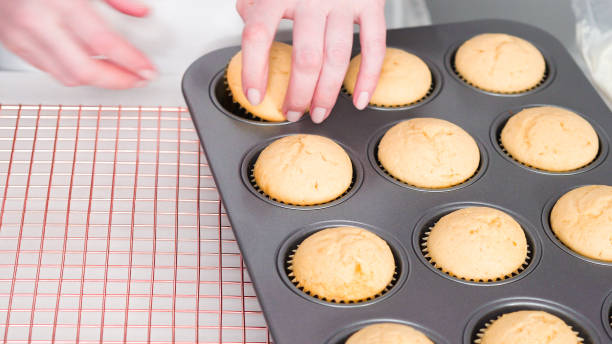
When buying a muffin pan, there are several important factors to consider to ensure you select the right one for your baking needs:
Material
When considering the material of a muffin pan, it’s essential to weigh factors like durability, heat conductivity, and ease of cleaning.
Aluminum and steel muffin pans are popular choices due to their durability and ability to conduct heat evenly, resulting in uniformly baked muffins. These pans are also typically affordably priced and resistant to warping.
Silicone muffin pans offer flexibility and easy release of baked goods, making them ideal for non-stick baking without the need for greasing. However, they may not brown muffins as well as metal pans.
Non-stick muffin pans feature a coating that prevents sticking and simplifies cleanup, but it’s important to choose a high-quality, PFOA-free coating for safe baking. Ultimately, the choice of material depends on personal preference and baking needs.
Size and Capacity
When selecting a muffin pan, it’s crucial to consider the size and capacity that best suits your baking needs. Muffin pans come in various sizes, including mini, standard, and jumbo, each offering different capacities for muffin or cupcake production.
Assess the size of your oven and the quantity of baked goods you typically make to determine the appropriate size. Mini muffin pans are perfect for bite-sized treats and portion control, while standard-sized pans are versatile and suitable for most recipes.
Jumbo muffin pans are ideal for larger muffins or cupcakes, perfect for special occasions or hearty breakfast treats. Understanding your baking requirements ensures you choose a muffin pan that meets your expectations and helps you achieve delicious results every time.
Shape
When choosing a muffin pan, the shape is an important consideration that can affect both the appearance and baking characteristics of your muffins.
While round muffin pans are the most common, you can also find pans with square, rectangular, or novelty-shaped cups. The shape of the muffin pan can influence how the batter spreads and how the muffins rise, resulting in different textures and appearances.
For example, square or rectangular muffin pans may produce muffins with slightly crispier edges, while round pans often yield muffins with a more uniform shape.
Moreover, novelty-shaped pans can add fun and creativity to your baking, perfect for themed parties or special occasions. Consider your baking preferences and the presentation you desire when selecting the shape of your muffin pan to ensure the perfect outcome for your delicious creations.

Durability
Durability is a key factor to consider when purchasing a muffin pan, as it directly impacts the longevity and performance of the product.
Opting for a muffin pan made from high-quality materials such as heavy-gauge aluminum or steel ensures resilience against warping, bending, and corrosion over time. Reinforced edges and sturdy construction contribute to the overall durability of the pan, providing stability and preventing deformation during use.
Moreover, a durable non-stick coating enhances the pan’s longevity by minimizing wear and tear and facilitating easy release of muffins. Investing in a durable muffin pan not only ensures consistent baking results but also saves money in the long run by reducing the need for frequent replacements.
Non-Stick Coating
When selecting a muffin pan, the quality of the non-stick coating is a crucial factor to consider. A high-quality non-stick coating ensures easy release of muffins without the need for excessive greasing, resulting in beautifully shaped baked goods and effortless cleanup.
Look for muffin pans with a durable and PFOA-free non-stick coating that is resistant to scratching, chipping, and peeling. This ensures that the coating remains intact and safe for use with metal utensils, extending the lifespan of the pan.
Moreover, a reliable non-stick coating promotes even browning and prevents muffins from sticking to the pan, resulting in perfectly baked treats every time. Prioritizing a superior non-stick coating enhances the overall baking experience and ensures consistent, professional-quality results with minimal effort.
Heat Distribution
Heat distribution is a critical consideration when choosing a muffin pan as it directly impacts the evenness of baking and the consistency of your muffins.
Opting for a muffin pan with excellent heat distribution ensures that each muffin cooks uniformly, preventing hot spots and uneven browning. Look for pans made from materials such as heavy-gauge aluminum or steel, known for their ability to conduct and distribute heat evenly throughout the pan.
Moreover, pans with thick walls and bases help to retain heat, further enhancing the baking process. Even heat distribution results in perfectly baked muffins with consistent texture and flavor, making it a crucial feature to prioritize when selecting a muffin pan for your baking needs.
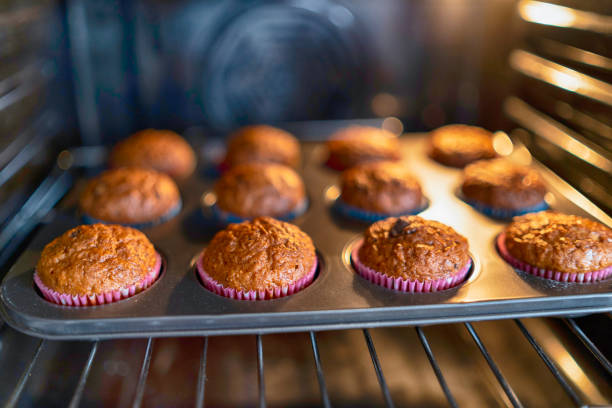
Maintenance
Maintenance is an important aspect to consider when purchasing a muffin pan to ensure its longevity and optimal performance. Choose a muffin pan that is easy to clean and maintain to streamline your baking experience.
Look for pans with a durable non-stick coating that resists staining and buildup, allowing for effortless release of muffins and easy cleanup with minimal scrubbing.
Moreover, opt for dishwasher-safe muffin pans for convenient maintenance, but always check the manufacturer’s instructions to ensure compatibility with your dishwasher.
To prevent damage, avoid using abrasive cleaners or metal utensils that may scratch or chip the non-stick coating. Proper storage in a dry, cool place away from direct sunlight helps preserve the pan’s condition and prevents warping.
Regular inspection for signs of wear and tear, such as scratches or rust, allows for timely replacement to maintain the quality of your baked goods. By prioritizing maintenance, you can prolong the lifespan of your muffin pan and continue to enjoy delicious muffins for years to come.
Price
When purchasing a muffin pan, price is an important consideration, but it shouldn’t be the sole determining factor. While there are affordable options available, it’s essential to balance cost with quality and durability.
Higher-priced muffin pans often feature superior materials, construction, and non-stick coatings that contribute to better baking results and longer lifespan. However, this doesn’t mean that budget-friendly options are necessarily of poor quality.
Consider your baking needs, frequency of use, and desired features when determining how much to invest in a muffin pan. Moreover, keep an eye out for sales, discounts, or bundled deals that may offer greater value for your money.
Ultimately, prioritizing quality over price ensures that you get a muffin pan that delivers reliable performance and enjoyable baking experiences for years to come.
Frequently Asked Questions (FAQs) – How To Clean Muffin Pan
Q: What’s the easiest way to clean my muffin pan after baking?
A: Cleaning your muffin pan is a breeze! Simply soak it in warm, soapy water for a few minutes, then scrub gently with a sponge or brush to remove any stubborn residue.
Q: Can I use natural ingredients to clean my muffin pan?
A: Absolutely! Vinegar and baking soda are natural cleaning powerhouses. Sprinkle some baking soda on your pan, then add a splash of vinegar and let it fizz away the mess. After a few minutes, scrub and rinse for a sparkling clean pan.
Q: Is it safe to use dish soap on my muffin pan?
A: Yes, it’s completely safe! A mild dish soap can help break down grease and grime, making it easier to clean your muffin pan. Just be sure to rinse it thoroughly afterward to avoid any soapy residue.
Q: I accidentally burned some muffins onto my pan. Can it still be salvaged?
A: Don’t worry, your pan isn’t ruined! For tough, baked-on messes, try soaking your pan in a mixture of warm water and dish soap overnight. By morning, the mess should easily wipe away, leaving your pan looking good as new.
Q: What’s the best way to maintain the non-stick coating on my muffin pan?
A: To keep your muffin pan’s non-stick coating in top condition, avoid using abrasive scrubbers or metal utensils that can scratch the surface. Instead, opt for silicone or nylon tools and hand wash your pan with mild detergent and warm water.
Q: Can I put my muffin pan in the dishwasher?
A: While some muffin pans are dishwasher-safe, it’s best to check the manufacturer’s instructions to be sure. If your pan is dishwasher-safe, place it on the top rack to avoid any potential damage from high heat or harsh detergents.
Q: Any tips for preventing sticking in the future?
A: Absolutely! Before filling your muffin cups, lightly grease them with cooking spray or butter, or use paper liners for easy removal. This simple step will help ensure your muffins release effortlessly from the pan every time.
Q: How often should I deep clean my muffin pan?
A: It’s a good idea to give your muffin pan a thorough cleaning after each use to prevent buildup and maintain its longevity. However, if you notice stubborn residue or staining, a deeper clean may be necessary.
Q: Will cleaning my muffin pan regularly affect its performance?
A: Not at all! In fact, regular cleaning will help preserve your muffin pan’s performance by preventing buildup that can affect baking results. Plus, a clean pan ensures that each batch of muffins comes out looking and tasting their best.
Q: Any final words of encouragement for keeping my muffin pan clean and pristine?
A: Absolutely! Remember, keeping your muffin pan clean doesn’t have to be a chore—it’s a simple and rewarding way to ensure delicious results every time you bake. So don’t hesitate to give your pan a little TLC, and enjoy the satisfaction of baking with ease!
Conclusion
In conclusion, maintaining the cleanliness of a muffin pan is essential for ensuring the quality of baked goods and prolonging the lifespan of the pan itself.
By following the steps outlined above, including pre-soaking, scrubbing with a gentle brush, and utilizing natural cleaning agents like baking soda and vinegar, one can effectively remove stubborn residue and prevent the buildup of grease and grime.
Consistent upkeep not only preserves the appearance and functionality of the pan but also promotes food safety and enhances the overall baking experience.
With these simple yet effective cleaning techniques, enthusiasts can enjoy delicious muffins and other baked treats with confidence, knowing that their equipment is properly maintained and ready for future use.
Other Articles You May Also like: